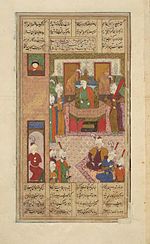An another proof
1.In Inranian/Persian language Azi-Dahaka/Dhaka means Nag or Cobra and King Zahak/Zahak Emparer is Related to the same caste and all you and other Historian mentioned Dhaka Gotra of Jat caste are decendent of Nagvanshi and Indo-Aryanan were comes from Iran.
2.King Gupta or Gupt were belongs to Nagvansh and were decendent of Kushana's.We write Nagadatta in Hindi History Books,Buddist write Dhata King in their Dhamapada (Part of Buddist Granth),Eropian write Dhaka instade of Dhata(Translated from Pali to english,Buddist Granth) all Buddist and Hindu's claiming That king ruled complete Ancient India(Present India,Bangladesh,Pakistan,Nepal,Afganistan and some part of China).Where there Dhaka named Mountains,Villages and Gotra's(Like Dhaka,Dhake,Deka,Dahake,Dhakar,Dhoke's are found.
3.Coin's, Statues and pictures of Zohak Empare's time of Iran and which were found in India(Kushan) are in same size,style and in shapes.This is not an incidant.



 Reply With Quote
Reply With Quote





